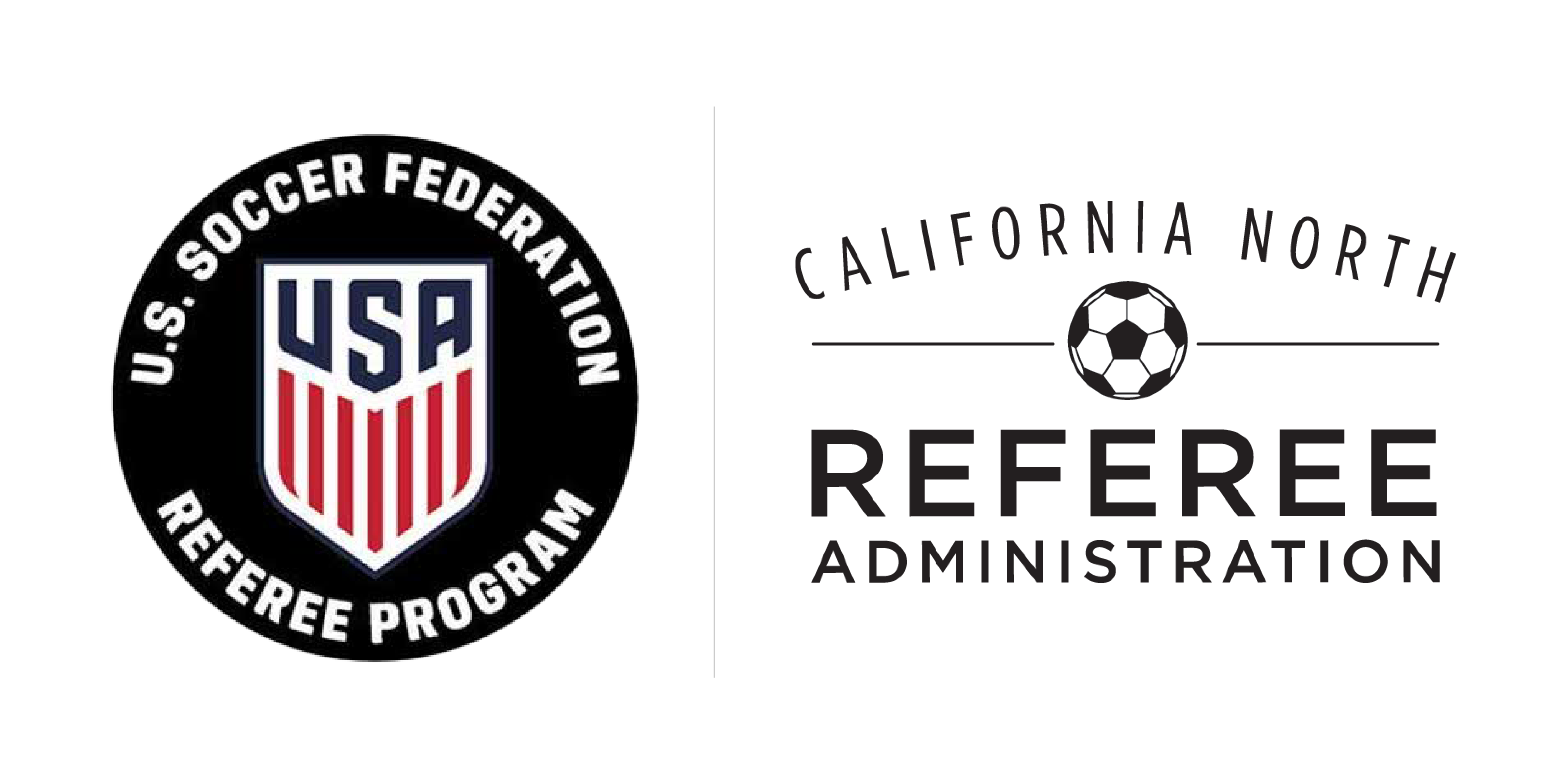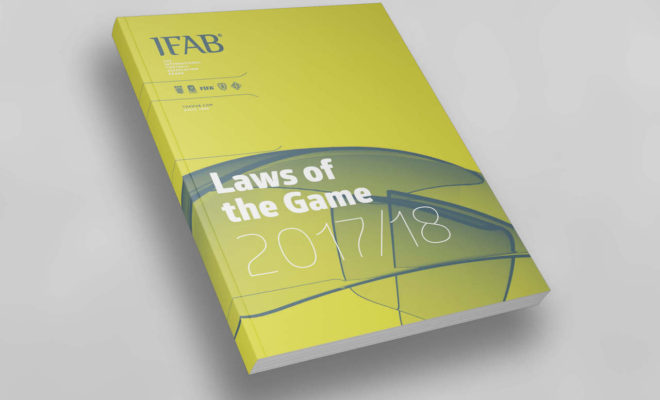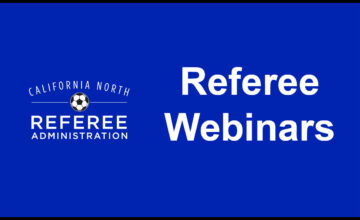Starting June 1, 2017, the new IFAB Laws of the Game are enforced. Check with your local referee assignor or tournament to confirm the changes are in effect for leagues that started prior to June 1. These changes include updates to substitutions at top level competitions, changes to player equipment, Kicks from the Mark to determine a winner, and misconduct.
Download your free PDF copy from CNRA:
- English: 2017/18 IFAB Laws of the Game
- Español: 2017/18 IFAB Reglas de Juego
Purchase your copy of the IFAB Laws of the Game:
- The IFAB Online Store: http://theifab.com/shop
Here is a summary of the changes to the current rules:
ALL LAWS
- Replace ‘infringement/infringe’ etc. with ‘offence/offend’ etc.
LAW 1 – THE FIELD OF PLAY
- Artificial turf may be used for the lines on a grass field if not dangerous
LAW 3 – THE PLAYERS
- National FAs can allow a maximum of five substitutions (except at the top level)
- National FAs can now allow return substitutions in youth, veterans and disability football
- Clearer wording for the substitution procedure
- A substitution made at half-time without informing referee is not a caution (YC) offence
- Changing the goalkeeper at half-time without informing the referee is not a caution (YC)
- Player who enters the field of play without the referee’s permission (if it is required) and interferes is punished with a direct free kick (FK)
- Team scoring a goal with an extra person on the field is punished with a direct FK
LAW 4 – THE PLAYERS’ EQUIPMENT
- Goalkeeper caps are not included in the list of restrictions on head covers
- Players are not permitted to wear/use any electronic or communication equipment, except electronic performance and tracking systems/EPTS); technical staff may only use communication equipment for safety/welfare issues
- All EPTS equipment must bear a minimum safety standard mark
LAW 5 – THE REFEREE
- Important statement that decisions made by match officials must always be respected
- National FAs can allow temporary dismissals (sin bins) for some/all cautions (YC) in youth, veterans, disability and grassroots football (Guidelines for both systems will be published)
- A medical official guilty of a dismissible offence may stay/treat players if no other medical person is available for the team
LAW 7 – THE DURATION OF THE MATCH
- A short drinks break is permitted at half-time of extra time
LAW 8 – THE START AND RESTART OF PLAY
- Kicker can stand in the opponents’ half at the kick-off
LAW 10 – DETERMINING THE OUTCOME OF A MATCH
- Extra time must be two equal periods, maximum 15 minutes each
KICKS FROM THE PENALTY MARK (KFPM)
- Corrected wording for goalkeeper who is unable to continue
- Excluded player may replace a goalkeeper even if team has used all its permitted substitutes
- Kicker may not play the ball a second time
- A goalkeeper who offends and the penalty has to be retaken must be cautioned (YC)
- If the kicker offends the kick is forfeited (recorded as ‘missed’)
- If the goalkeeper and kicker offend at the same time:
- retake and two cautions (YCs) if no goal is scored
- if a goal is scored the kicker is cautioned (YC) and kick recorded as ‘missed’
LAW 11 – OFFSIDE
- An offside player can be penalised if the ball rebounds/deflects off a match official
- Addition of ‘attempts to’ to the definition of a ‘save’
- Offside guidance:
- player in offside position who impedes an opponent must be penalised
- player in offside position who is fouled before committing an offside offence – foul penalised
- player in offside position who is fouled when already committing an offside offence – offside penalised
LAW 12 – FOULS AND MISCONDUCT
- Verbal offences are punished with an indirect FK
- If an advantage is played for a sending-off (RC) and the player commits another offence, that offence is penalised
- A player ‘stopping a promising attack’ in the penalty area is not cautioned (YC) if the offence was an attempt to play the ball
- Addition to list of cautions (YCs) for a ‘denying an obvious goal-scoring opportunity’ (DOGSO) offence in the penalty area which was an attempt to play the ball
- Caution (YC) for goal celebration which causes safety/ security issue
- If player moves diagonally to pass the last defender/goalkeeper this can still be a DOGSO
- Clearer DOGSO wording for a penalty area offence which is an attempt to play the ball
- Entering the field of play without permission and stopping a goal or DOGSO is a sending-off
- Off-field offence by/against a player involving opposing player/substitute/team official (or against a match official) is penalised by FK on the boundary line if the ball is in play
- Direct FK for throwing or kicking ball/object onto the field to interfere with play/someone
- Direct FK on boundary line for throwing or kicking ball/object at someone off the field
LAW 13 – FREE KICKS
- Attacker in or entering the penalty area before a defensive FK has left the area cannot play or challenge for the ball until it has been touched by another player
LAW 14 – THE PENALTY KICK
- Kicker must be clearly identified
- If the goalkeeper and kicker offend at the same time:
- retake and two cautions (YCs) if no goal is scored
- if a goal is scored the kicker is cautioned (YC) and kick recorded as ‘missed’ + indirect FK (see Law 10)
- Goal can be awarded after outside interference if the ball still goes in the goal
LAW 16 – THE GOAL KICK
- Attacker entering the penalty area cannot play or challenge for the ball until it is touched by another player
Download your free PDF copy from CNRA:
- English: 2017/18 IFAB Laws of the Game
- Español: 2017/18 IFAB Reglas de Juego
Purchase your copy of the IFAB Laws of the Game:
- The IFAB Online Store: http://theifab.com/shop





7 Comments